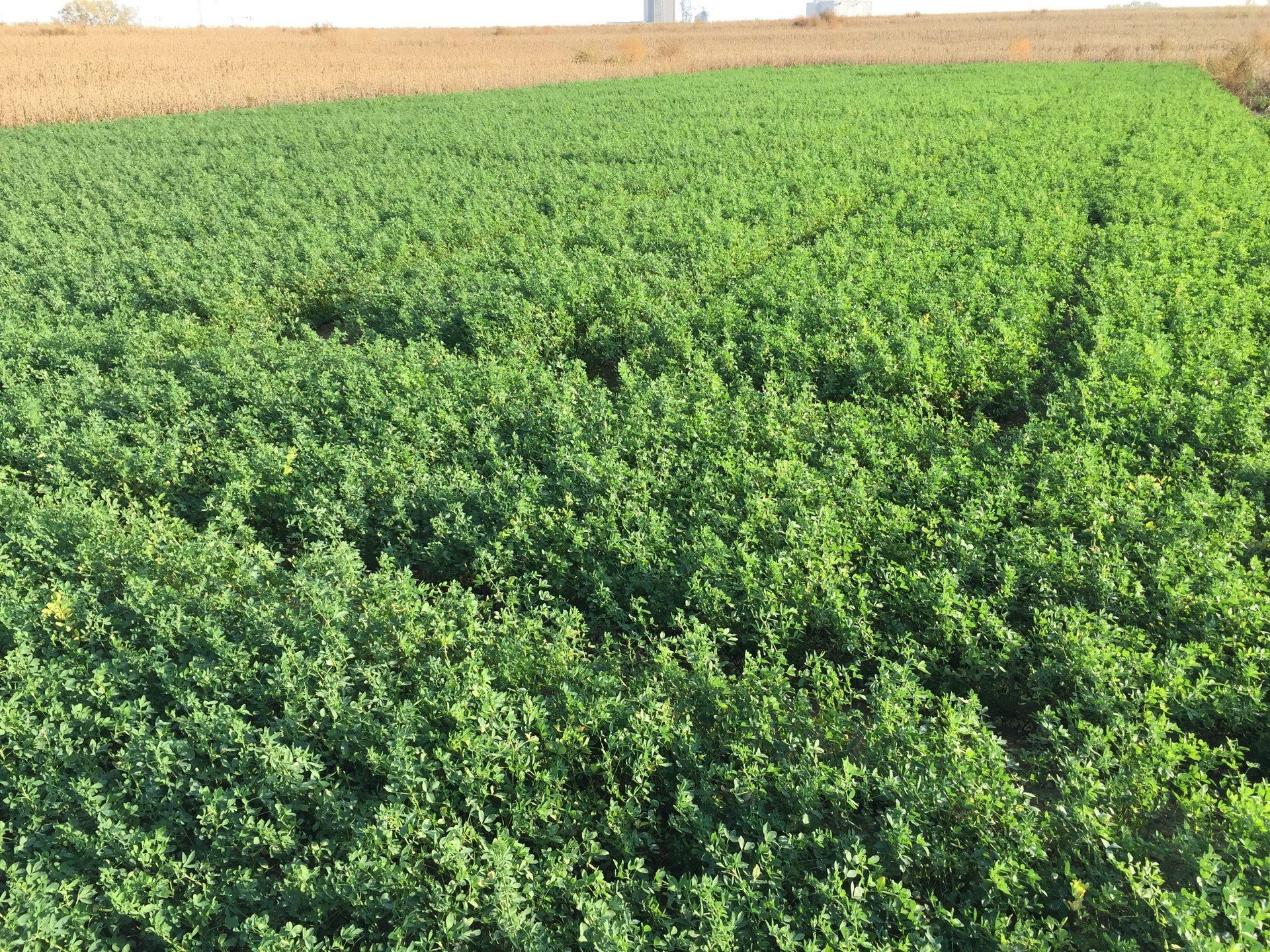Cover Crops Help Suppress Weeds, Build Productive Soil, and Help Control Pests and Diseases
At Camp Point Seed Co., we can help you choose the right kind of cover crops to suit your soil needs.
- Over time, a well-amended soil will supply more of the nutrients that plants require, which will reduce fertilizer requirements
- Soils that have been improved with organic
matter allow water to penetrate and be held in the soil longer - Cover
crops control weeds through competition,allelopathy (to prevent the growth of bad weeds with a natural herbicide),soil environmental changes, physical effect, enhancement of weed seed decay, and maintaining surface residues - Cover crops can provide food and habitat for beneficial insects, which kill and eat the bad insects
- Cover crops stimulate microorganisms that suppress
soilborne diseases that break disease cycles
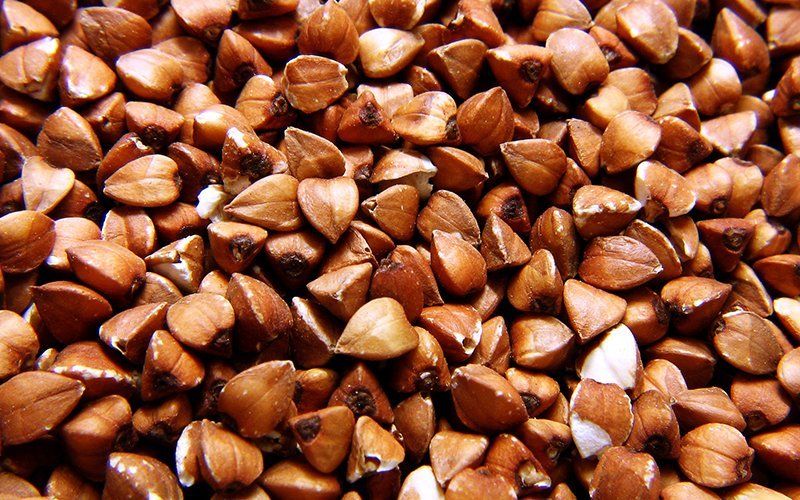
Buckwheat
Seeding rates:
3.5 lb
per 2,000 square feet
Seeding dates:
June through August
Time to control:
40 days, 10 days after onset of flowering
Usage:
For low-fertility soils. Produces mineralized phosphorus. Short cycle crop. Weed suppression. Mellows the soil
Management goals:
Reduce weeds, stabilize soil, nitrogen scavenging, attract beneficial insects, winter erosion protection
Management tricks:
Don’t plant into hard soil. Avoid wet spots, control on
time
Problems:
Gaps, plant evenly on a well-prepared seedbed. Weak growth, avoid hard soil, wet spots. Don’t plant just before a heavy rainstorm.

Clover: Crimson
Seeding rates:
1/2 lb
per 2,000 square feet
Seeding dates:
January - March (Frost seed), April, August - October
Time to control:
Flowering (May)
Usage:
Use as a nurse crop, frost seed over small grain, plowed down in late spring. Improves soil quality. Attracts beneficial insects. Builds soil organic matter
Management goals:
Nitrogen fixation, reduces weeds, breaks up deep compaction, attracts beneficial insects, and winter erosion control
Management tricks:
The best for overseeding
and has shade tolerance
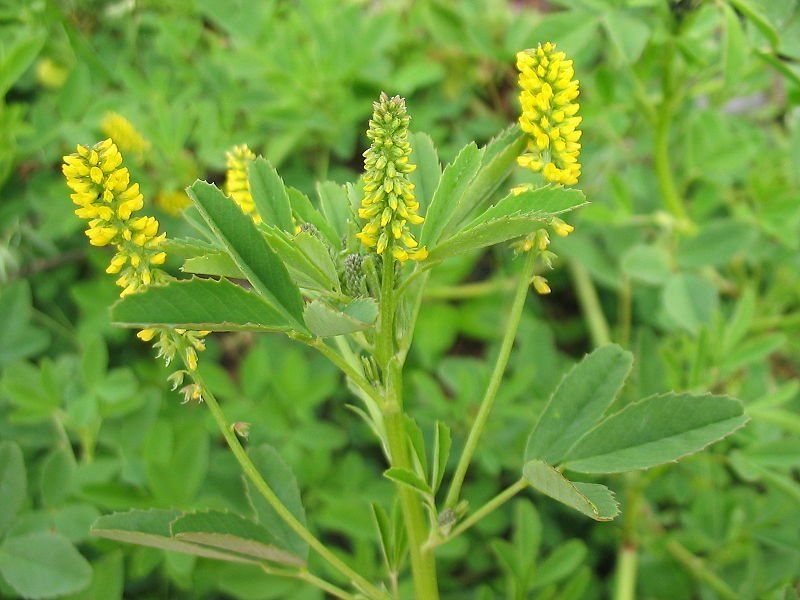
Clover: Sweet
Seeding rates:
1 lb per 2,700 square feet
Seeding dates:
January - May and August - September
Time to control :
When plants are 6 - 10 inches tall in the spring
Usage:
Soil improvement and nitrogen production
Management goals:
Mining phosphorus and potassium. Helps loosen hard-packed soil
Management tricks:
Long roots pull up minerals and softens soil compaction
Problem:
Do not plant where beans are to be planted the next year
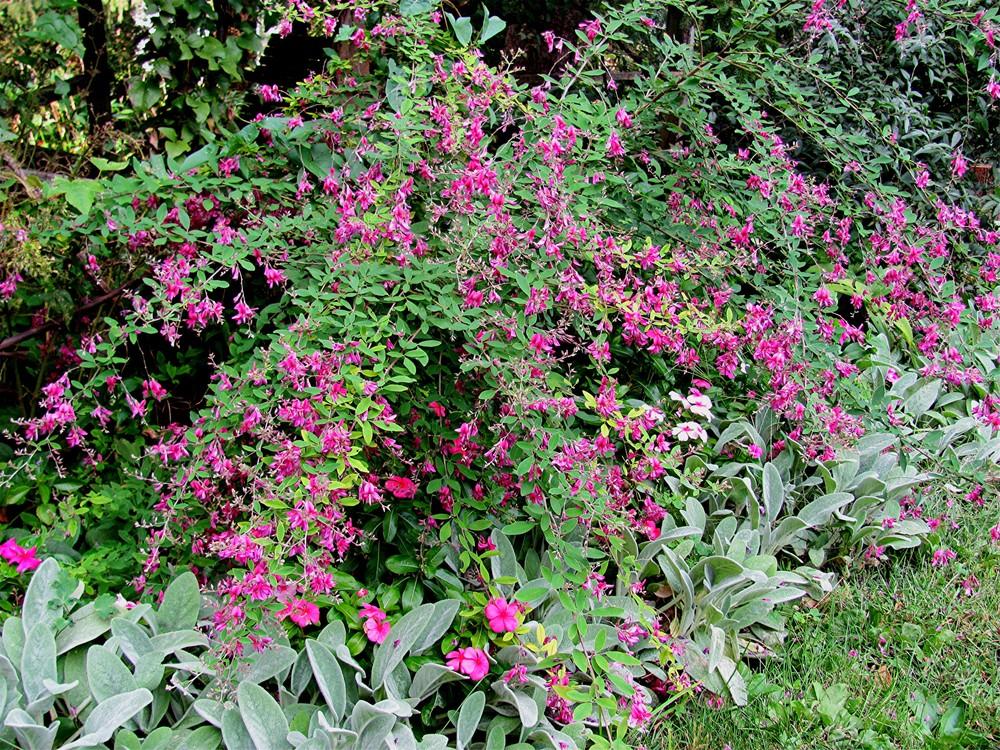
Lespedeza: Annual
Seeding rates:
1/2 lb
per 2,000 square feet
Seeding dates:
Frost seed January - March and before May 1st
Time to control:
At bloom time
Usage:
Use as a nurse crop, frost seed over small grain, plowed down in late spring. Improves soil quality. Attracts beneficial insects. Builds soil organic matter. Grows in poorer soils
Management goals:
Nitrogen fixation, increase organic matter
Management tricks:
Needs firm soil bed
Problems:
Slow growth in cool soil
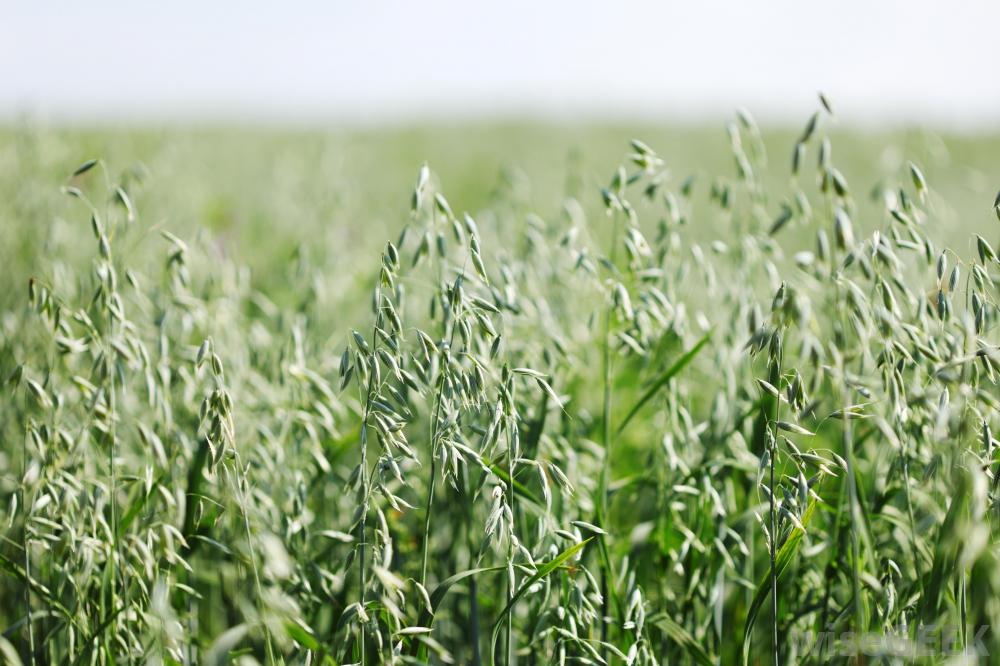
Oats: Spring / Winter
Seeding rates:
6.5 lb per 2,000 square feet
Seeding dates:
Mid-February to mid-May, August - September
Time to control:
4 - 6 weeks
Usage:
Nurse crop with peas and vetch. With legumes for forage. Killed winter cover for early planting. For erosion control and weed suppression.
Management goals:
Reduce weeds (Fall). Stabilize soil aggregates. Summer erosion protection. Winter erosion protection
Management tricks:
Plant with legumes such as field peas
Problems:
Soil crusting from heavy rain can stop emergence
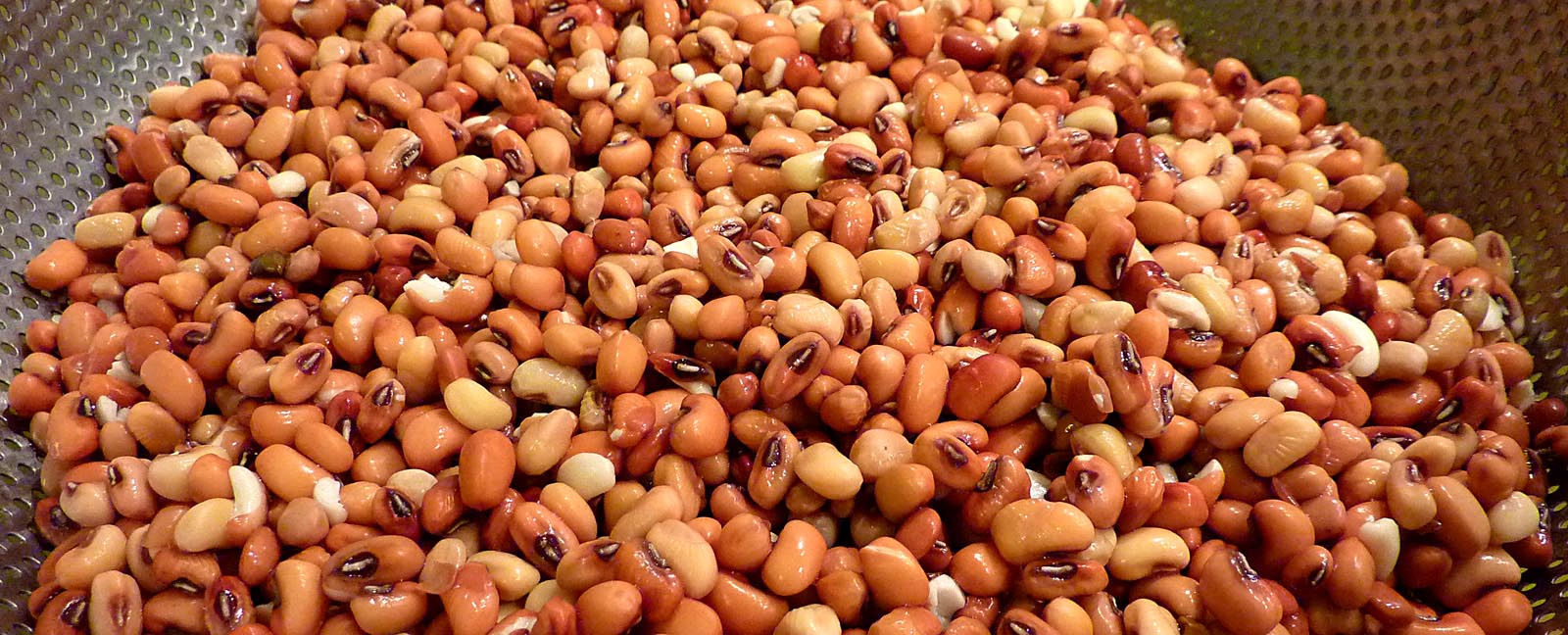
Peas: Cow and Field
Seeding rates:
6 lb per 2,000 square feet
Seeding dates:
March - April and August
Time to control:
With nurse crop 6 - 8 weeks
Usage:
Nitrogen fixation
Management goals:
Nitrogen fixation, increase organic matter. Mixed with oats to provide ground cover over the winter
Management tricks:
Plant as early as possible with nurse crop. Possibly plant in late summer as well. Nitrogen from the peas will aid the growth of the grain, which will prevent frost-kill and give ground cover over the winter
Problems:
Slow to establish, use nurse crop (e.g., oats). Weak in wet spots
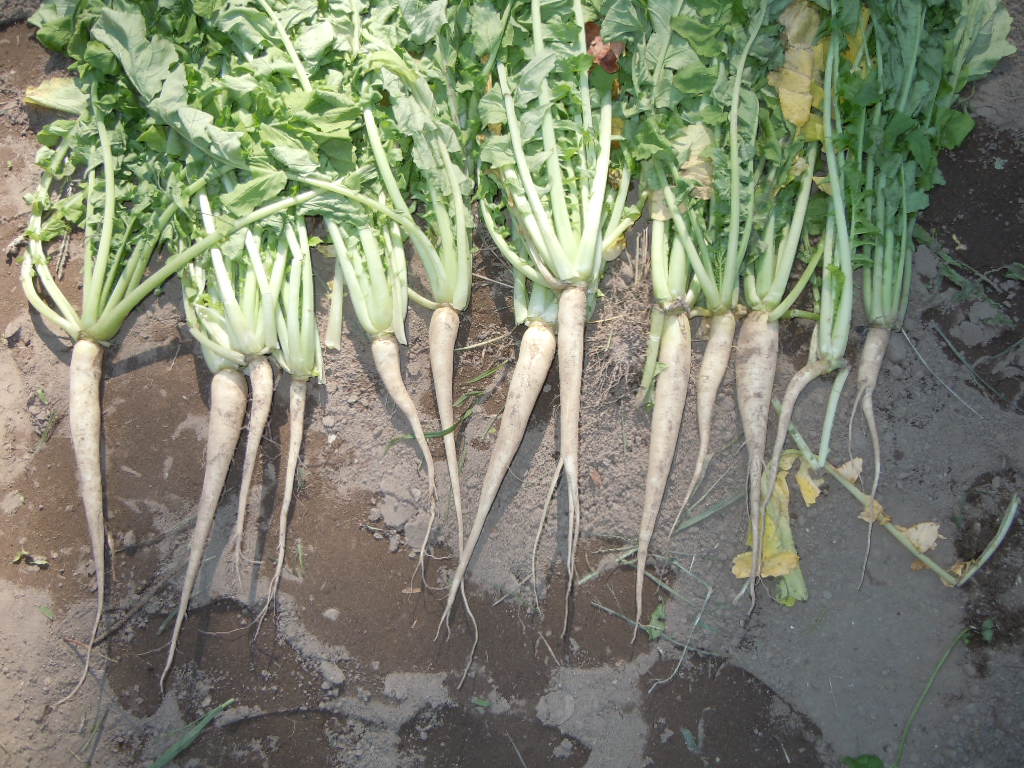
Radish: Forage
Seeding rates:
1/2 lb
per 2,000 square feet
Seeding dates:
Late August to September
Time to control: Winter kills this cover crop
Usage:
Remediate deeper compacted soil and scavenges
nitrogen. Opens up compacted soil for the next seasons roots
Management goals:
Reduce fall weeds, break up deep compaction. Adds organic matter
Management tricks:
Roll the ground after seeding to ensure good seed-to-soil contact but not to break up aggregates
Problems:
Avoid rotation with brassica
(Cabbage family)
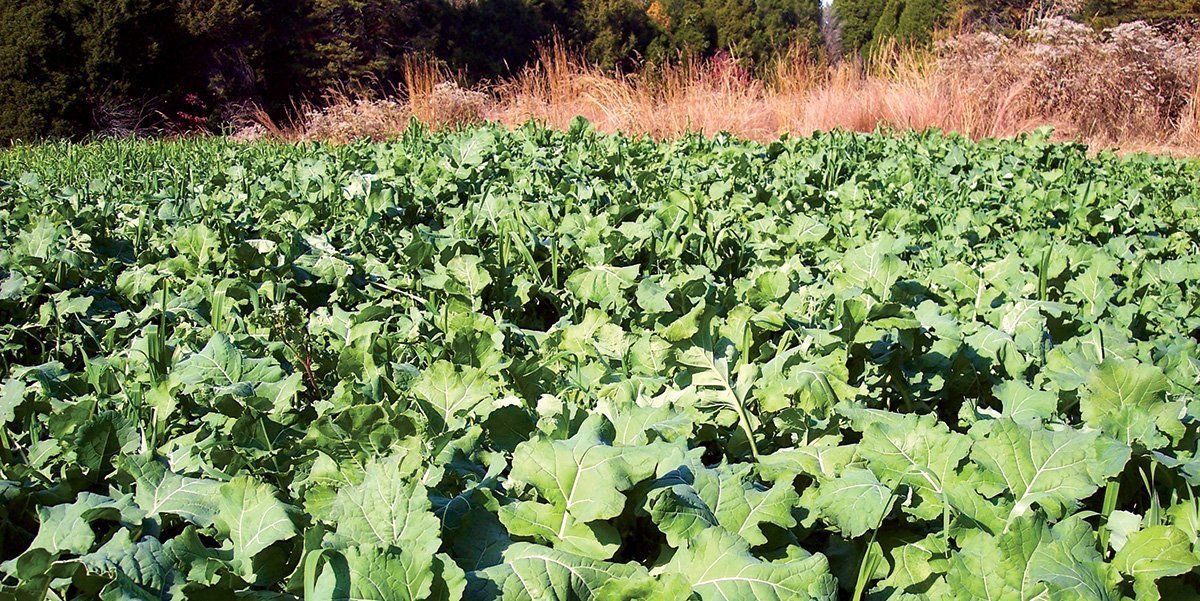
Rape: Dwarf Essex
Seeding rates:
3 to 6 lb per acre
Seeding dates:
April through August
Time to control:
Before blooming
Usage:
In spring , put large amount
of organic matter into soils, toxic to soil pathogens, gives some control over nematodes
Management goals:
Most species release chemical compounds that may be toxic to soil-borne pathogens and pests, such as nematodes, fungi, and some weeds
Management tricks:
Do not allow it to go to seed the following spring
Problems:
It can be a weed problem if left to go to seed

Ryegrain: Cereal
Seeding rates:
10 lb per 2,000 square feet
Seeding dates:
September 15 - November 10 and in January for winter cover. October 15 for spring cover. April 15 as nurse crop for clover
Time to control:
When growth resumes in spring (3 - 6 inches: April). For mulched no-till, roll at heading (Mid to late May)
Usage:
Nurse crop with peas and vetch. With legumes for forage. Killed winter cover for early planting. Will hold saturated soil together at snowmelt.
Management goals:
Winter manure application. Winter erosion protection
Management tricks:
Control on time, leave 2 - 3 weeks between incorporation and replanting. Can be mixed with hairy vetch and red clover
Problems:
Becomes too big and fibrous if left for too long. Rainy spring may prevent timely control

Ryegrass: Annual and Italian
Seeding rates:
1.5 lb
per 2,000 square feet
Seeding dates:
Late August (Ideal), April - September
Time to control:
4 to 6 weeks minimum, or incorporate in spring
Usage:
Earliest planting date of winter cover, fast cover between beds: temporary “lawn,” catch crop for excess nitrogen. Is a good cover crop on heavier ground. Has flooding tolerance than other crops
Management goals:
Nitrogen scavenging and stabilize soil aggregates. Summer and winter erosion control
Management tricks:
Drill when possible, tolerates compacted solution. May require multiple applications of herbicide to control
Problems:
Needs soil moisture, makes volunteer seedling, can be hard to kill with herbicides, especially round-up-use select herbicide instead
Sundangrass
Seeding rates:
2.5 lb
per 2,000 square feet
Seeding dates:
June to mid-August (Sundangrass ), July to mid-August (Sorghum/sundan )
Time to control:
Mow when 20 to 30 inches tall
Usage:
Hard soil / standing water. Has allelopathic
properties against weedy grasses
Management goals:
Improving soil organic matter. Produces a strong root system and lots of biomass. Reducing root-knot nematode pressure
Management Tricks:
Mowing when the crop reaches 20 - 30 inches tall
Problems:
Crop gets too big to mow or to incorporate after frost has killed it
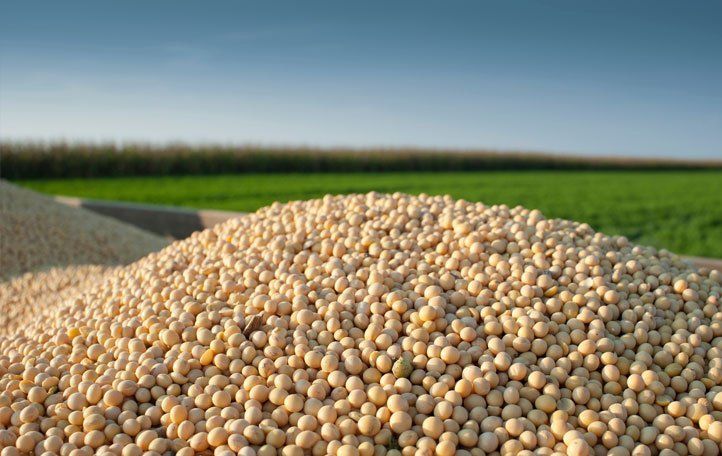
Soybeans: Non-GMO
Seeding rates:
5 lb per 2,000 square feet
Seeding dates:
May - August 5
Time to control:
Until 50% flowers
Usage:
Nitrogen fixation, forage crop, and biomass. Will withstand short periods of drought, will grow on all types of soil
Management goals:
Nitrogen fixation, increase organic matter
Management tricks:
Well-prepared seed bed of killed rye or wheat prevent large weed emergence
Problems:
Sow closely to help control weeds. Weak in wet spots
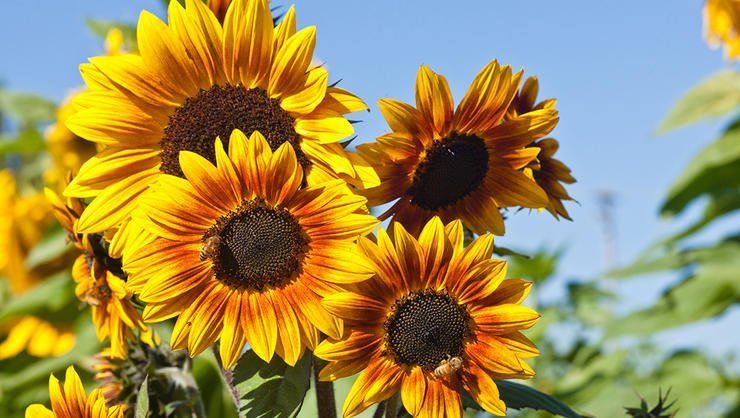
Sunflowers: Non-GMO
Seeding Rates :
¼ b per 2000 square feet
Seeding Dates :
May - June
Time to Control:
When growth resumes in spring (3 to 6 inches, April). For mulched no-till, roll at heading (Mid to late May)
Usage:
Sunflower pull up nutrient from deep in the soil. Attract natural predator organism to crop pests and pollinators
Management Goals :
The roots leave a good tilth for the following crop
Management Tricks :
Plant for Allethpatic control (Suppressed certain weeds)
Problem :
Birds eating seeds

Turnip: Spring "Pasja"
Seeding rates:
Seed at 3-5 lb per acre
Seeding dates:
Mid-spring through Fall
Time to control:
Frost
Usage:
Break up compaction, low residue in spring
Management goals:
Reduce weeds. Reduce surface hardness, winter erosion control, nitrogen scavenging
Management tricks:
Roll or drag the ground after planting to ensure good seed-to-soil contact. Harbor brassica diseases do not use in rotation with brassicas
Problems:
Slow to establish, prepare a smooth weed-free seed bed. May suppress cucurbit crops that follow
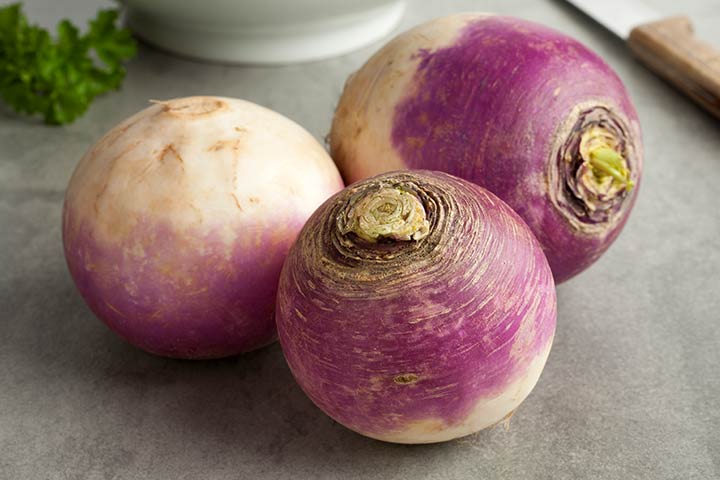
Turnip
Seeding rates:
1 lb per 2,000 square feet
Seeding dates:
August - September
Time to control:
Frost kill
Usage:
Break up compaction, low residue in spring
Management goals:
Reduce weeds. Reduce surface hardness, winter erosion control, and nitrogen scavenging
Management tricks:
Roll or drag the ground after planting to ensure good seed-to-soil contact. Harbor brassica diseases do not use in rotation with brassicas
Problems:
Slow to establish, prepare a smooth weed-free seed bed. May suppress cucurbit crops that follow
Vetch: Winter Hairy
Seeding rates:
1.5 lb per 2,000 square feet
Seeding dates:
Late August through September
Time to control :
At flowering in early June
Usage:
Fall sown with rye for high-biomass overwintering crop. Can convert nitrogen gas in the air into fertilizer nitrogen
Management goals:
Nitrogen fixation, reduces weeds, stabilize soil aggregate, reduces surface hardness, and winter erosion control
Management tricks:
Use nurse crop. Mow or crimp at flowering (Early June) to kill without herbicide

Wheat: Winter and Spring
Seeding rates:
10 lb per 2,000 square feet
Seeding dates:
September 15 - November 10 and in January for winter cover. October 15 for spring cover. April 15 as a nurse crop for clover
Time to control:
When growth resumes - early May
Usage:
Winter cover for spring plow down. Green manure and weed control. Valuable nurse crop for frost-seeded medium red clover
Management goals:
Reduces weeds. Reduce root rot. Stabilize soil aggregates. Nitrogen scavenging. Winter erosion protection
Management tricks:
Drill if possible, if broadcasting, increase the rate by 30%. For weed suppression, increase the rate by 30%
Problem:
Excess growth in warm, damp spring
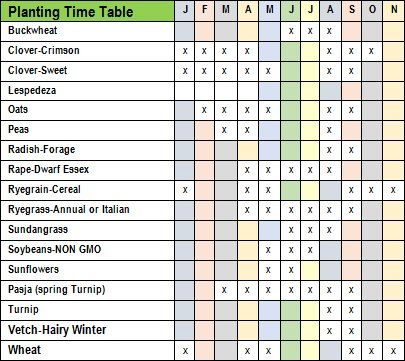
Soybean Yields Using Cover Crops
Cover crop /Seeding rate (lb) / Dry matter (T/A) / Soybean yields (bu/A)
Ryegrain / 156 / 2.0 / 44.8
Ryegrass / 30 / 0.9 / 39.4
Winter wheat / 160 / 1.4 / 45.4
Rape seed / 12 / 0.3 / 41.4
Oats / 156 / 0.2 / 39.7
No cover crop /0 / 0 / 37.3
Note:
T/A = tons per acre
Data from the Penn State Southeast Research and Extension Center
Summary
- Cover crops help to retain the soil, lessen erosion, and decrease the impact of precipitation on the ground by slowing the runoff of water
- They also reduce mineral leaching and winter annual weed growth
- The top growth adds organic matter when it is tilled into the soil
- The cover crop's root system also provides organic matter and opens passageways that help improve air and water movement in the soil
By Camp Point Seed Co.
217-593-7333 (SEED)
101 East Jefferson, PO Box 380, Camp Point, IL 62320
Disclaimer
Last updated: 1/26/2017
The information contained in this booklet is for general information purposes only. Camp Point Seed Co. assumes no responsibilities for errors or omissions in the contents in this publication.
Call us today for a FREE
estimate on our cover crops.
217-593-7333
We're a family-owned and operated business that has been serving the tri-state area.

